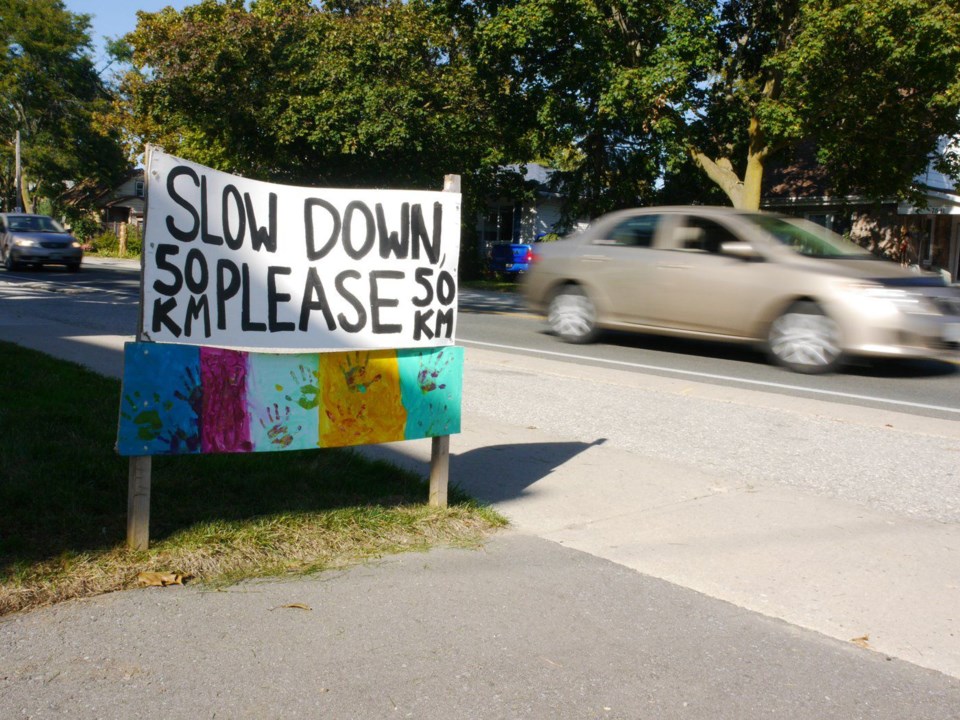INNISFIL — Debbie Perkunder and her neighbours want something done about speeding in Stroud.
Perkunder, who lives on Yonge Street in the Innisfil village just south of Barrie, says she and her neighbours have been speaking to anyone who will listen about the issue for at least a year now.
“The people that come through here fly through way over the speed limit,” she said. “We had a dog killed here. We have another dog that was hit there within the last three months. It is dangerous.”
Perkunder said her issue is with a stretch between Southview Avenue and Victoria Street, where the speed limit is 50 kilometres per hour.
Following concerns from the community, the County of Simcoe conducted a speed survey in July 2019.
“We will do that speed survey just to kind of get a true reflection of what the speeds are, because perception and reality can be quite different,” said Chris Doherty, a transportation engineering technician with the county.
The speed survey recorded 29,270 vehicles over the course of five days. According to the data, the average speed was 60 km/h, and more than 80 per cent of the vehicles recorded were travelling at a speed greater than 50 km/h.
In fact, the 85th percentile of speed — the speed at which 85 per cent of traffic is travelling at or below along a street or road under normal conditions — was 70 km/h.
“Higher speeds are obviously a concern and we take those seriously,” Doherty said. “Overall, it's that small number of vehicles we're trying to target, and it's hard to target them.”
Lower speed limits might seem like a solution, but Doherty says studies show they actually push more motorists into non-compliance than compliance.
Perkunder has asked for a radar sign, believing that could help the speeding issue.
“We will try to put one up there again. The issue is that those are kind of a short-term fix,” Doherty said, noting drivers begin to ignore the signs after a while.
The South Simcoe police traffic unit's Sgt. Dave Phillips drew a comparison between the situation in Stroud and speeding complaints in Cookstown.
“It's like any small village that you know has a major thoroughfare through it,” he said.
Phillips said officers patrol all parts of the town, but there is an officer doing traffic enforcement in Stroud at least twice a week.
“I think some of this is managing expectations,” he said, adding full compliance is nearly impossible. “You have to take on probably 10 or 15 per cent of the motoring public on every street.”
Perkunder still believes a radar sign could help. Absent that, she and her neighbours have made their own lawn signs asking drivers to slow down.
“I think it will make a difference,” she said. “We have to put our own signs up because nobody else seems to be taking this seriously.”
Shane MacDonald, Local Journalism Initiative Reporter, Barrie Advance


.png;w=120;h=80;mode=crop)
